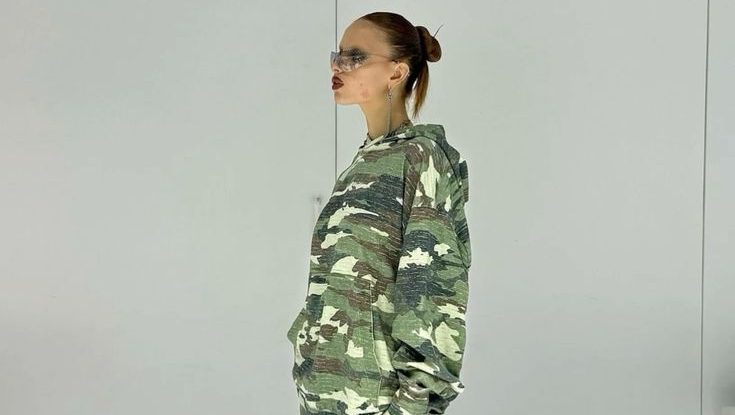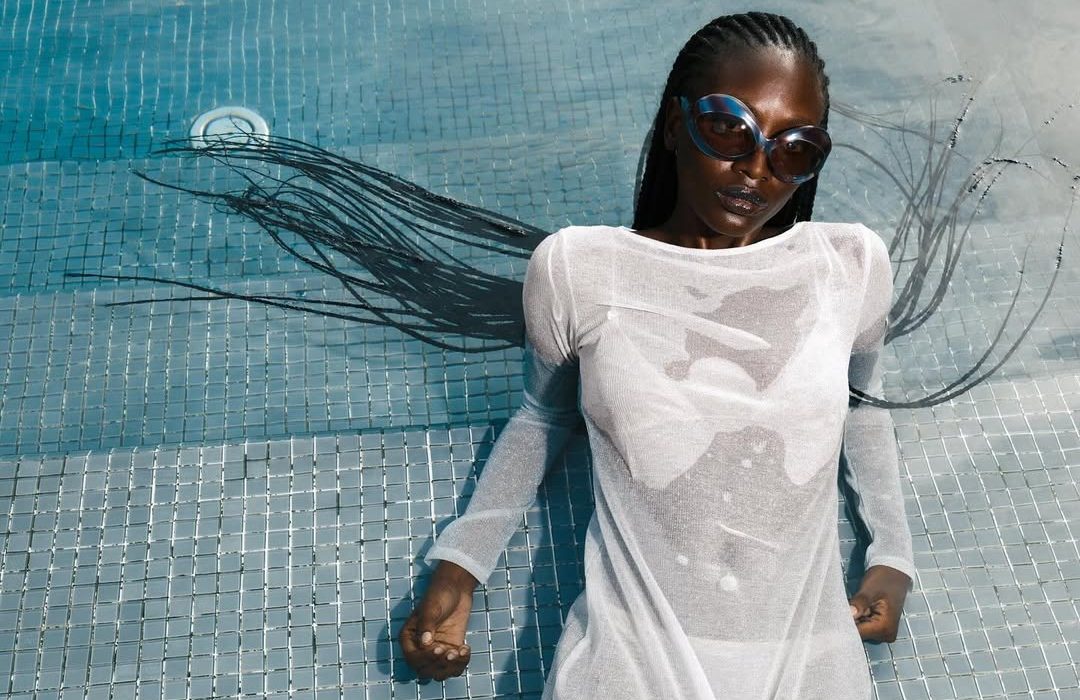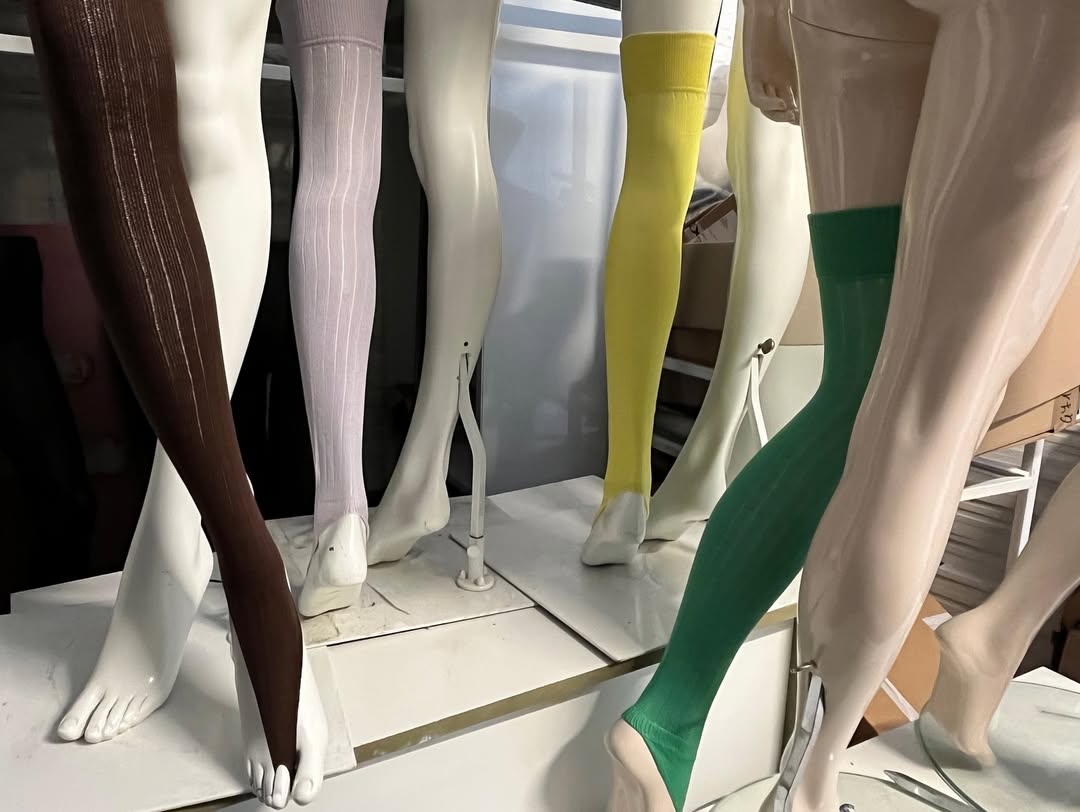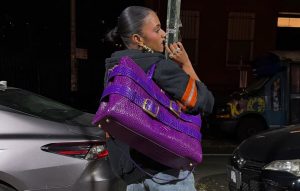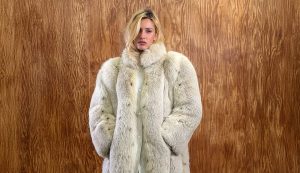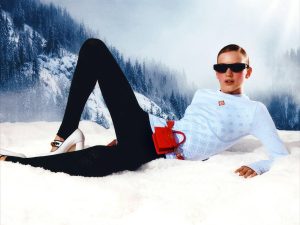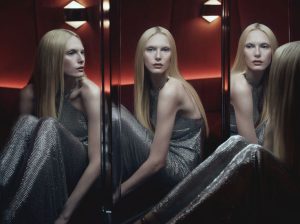Long confined to military uniforms, the camouflage print has stood the test of time, moving from subcultures to high fashion runways. Reclaimed by pacifist activists, elevated by streetwear, it continues to be endlessly reimagined. As brands like BAPE and Louis Vuitton breathe new life into it in 2025, we look back at this paradoxical pattern, created to blend in, now impossible to ignore.
A Brief History of a Loaded Pattern
Camouflage, as we know, today traces its origins back to World War I. It was French painter Louis Guingot who designed the first prototypes for the French army. At the time, the goal was clear: to make soldiers invisible by blending them into their surroundings. This marked a revolution, as military uniforms had previously been designed to stand out, making it easier to distinguish between camps on the battlefield.
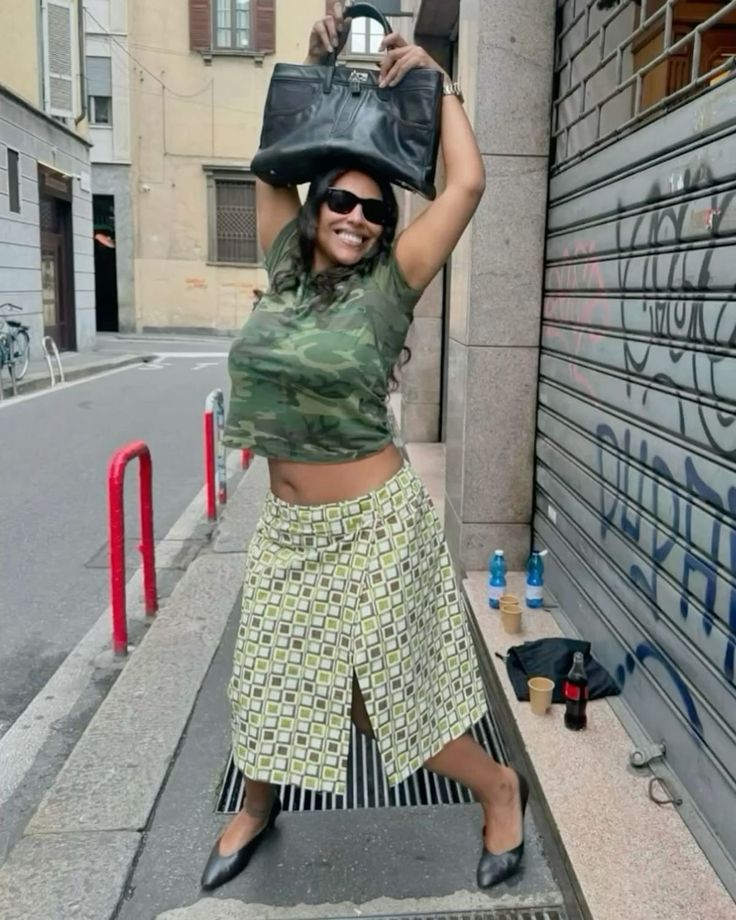
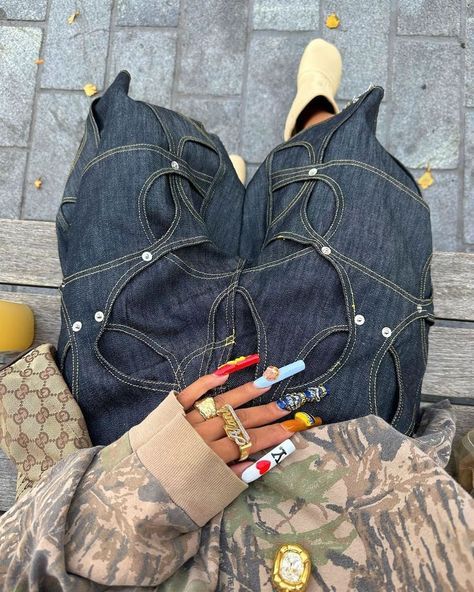
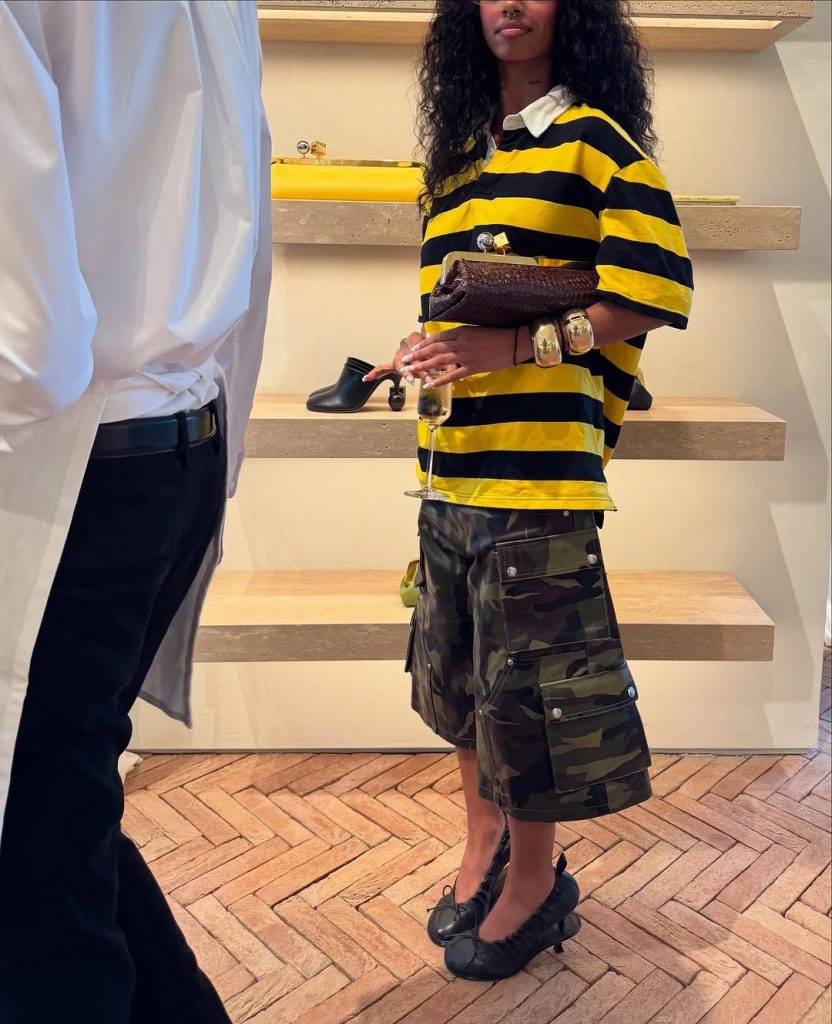
It was during World War II that the print became widespread, with its colors adapting to seasons and terrain: lighter tones for winter, greens and browns for forested areas. Initially purely utilitarian, the pattern soon became a symbol of the military. In the 1960s, amid the Vietnam War, camouflage switched sides. It was reclaimed by pacifist activists. This reversal of meaning, from war uniform to peace emblem, marked the beginning of a cultural shift that would only grow stronger over time.
In the 1990s and 2000s, camouflage exploded into pop culture. It appeared on runways, mainly at Christian Dior under John Galliano (Spring-Summer 2001) and in music videos, from Destiny’s Child’s I’m a Survivor to Paris Hilton’s Y2K aesthetic, where she boldly paired it with Barbie pink.
The Camo print, BAPE style
No conversation about camouflage is complete without mentioning A BATHING APE®, the Japanese brand founded by Nigo in 1993, now Artistic Director at Kenzo and a major figure in streetwear. As early as 1996, BAPE introduced its very first camouflage pattern. Instantly recognizable, it quickly became one of the brand’s most iconic visual signatures.
With its almost psychedelic aesthetic, BAPE’s camouflage stands as a reinvention of the genre, more graphic than military. It embodies a hybrid vision, blending Japanese culture, American hip-hop, and the Y2K imagination.
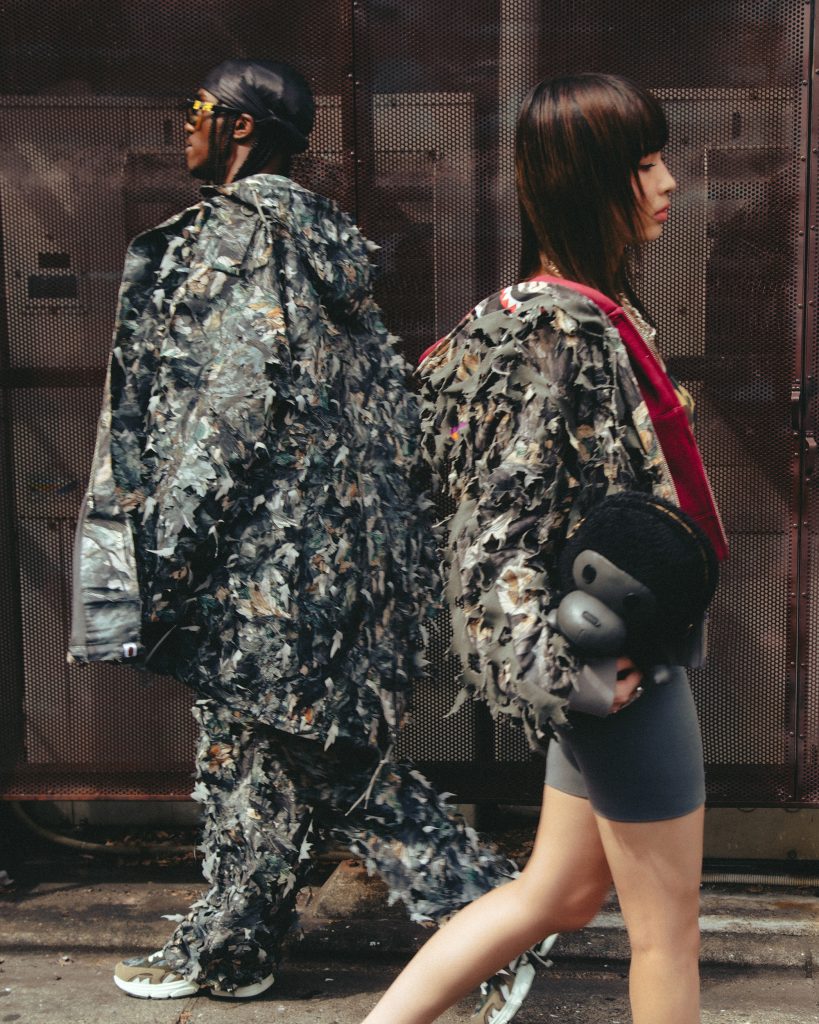
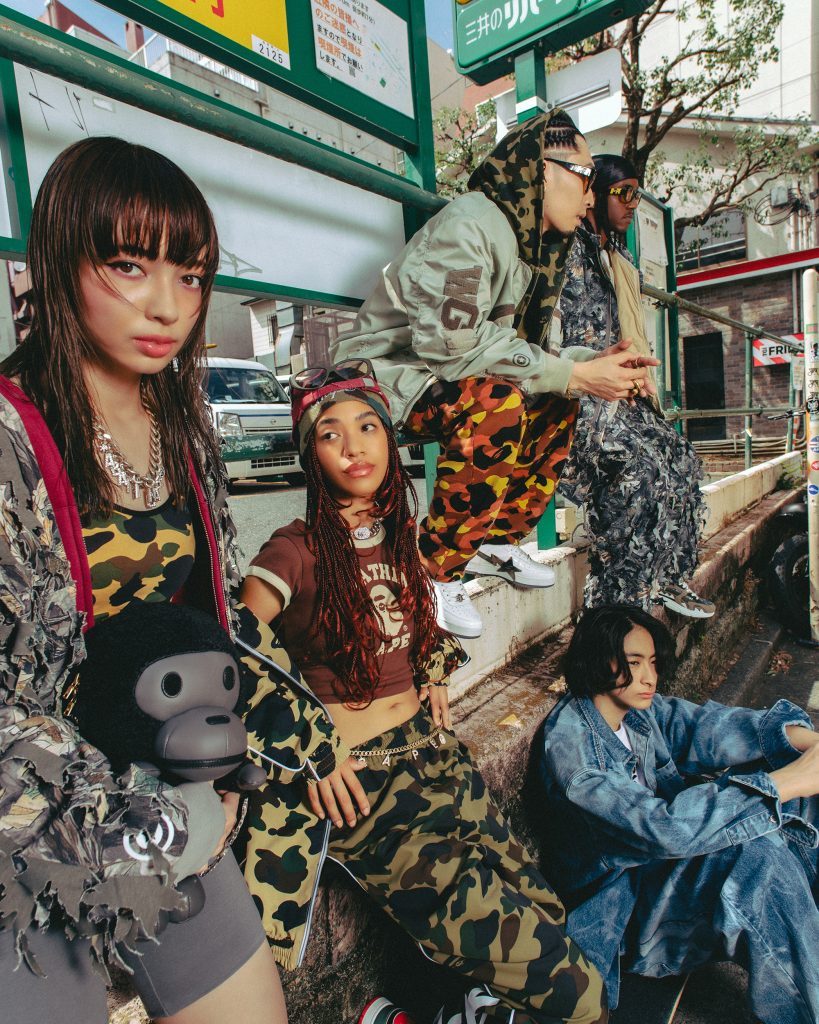
In its Fall-Winter 2025 collection titled Connect with People, the brand continues to evolve its visual language. In a world fractured by conflict, BAPE asserts clothing as a vehicle for expression and human connection. Drawing on the energy of the 2000s, the collection fuses bold colors, sportswear influences, snowboarding, hockey, American football and graffiti culture.
There’s a certain paradox in building a collection around human reconnection using a pattern originally designed to conceal, protect, or even isolate. This contrast between message and aesthetic highlights the depth of camouflage itself: a print full of contradictions, shaped by multiple histories, and endlessly reappropriated.
Among the standout pieces in the collection: military-style jackets with 3D laser-cut BAPE STA™ motifs, technical pants, and the triumphant return of the legendary Shark Full Zip Hoodie, reimagined in Tree Edge Camo with an earthy color palette. Also noteworthy is the introduction of Cloud Camo, a new pattern created in dyed denim and embellished with Sashiko embroidery, a traditional Japanese artisanal technique.
Camouflage today: A deceptive neutrality
Far from its strictly military or streetwear roots, camouflage has now infiltrated every corner of fashion. It appeared on the Fall-Winter 2025 runways at Louis Vuitton, as well as at Blue Marble, where it broke free from traditional combat codes. On social media, camo has become a go-to print for it girls who wear it in small doses, on a Diane V. bag like singer Mélissa Bon, on a T-shirt like Paloma Elsesser, or as cargo shorts like stylist Sierra Rena.
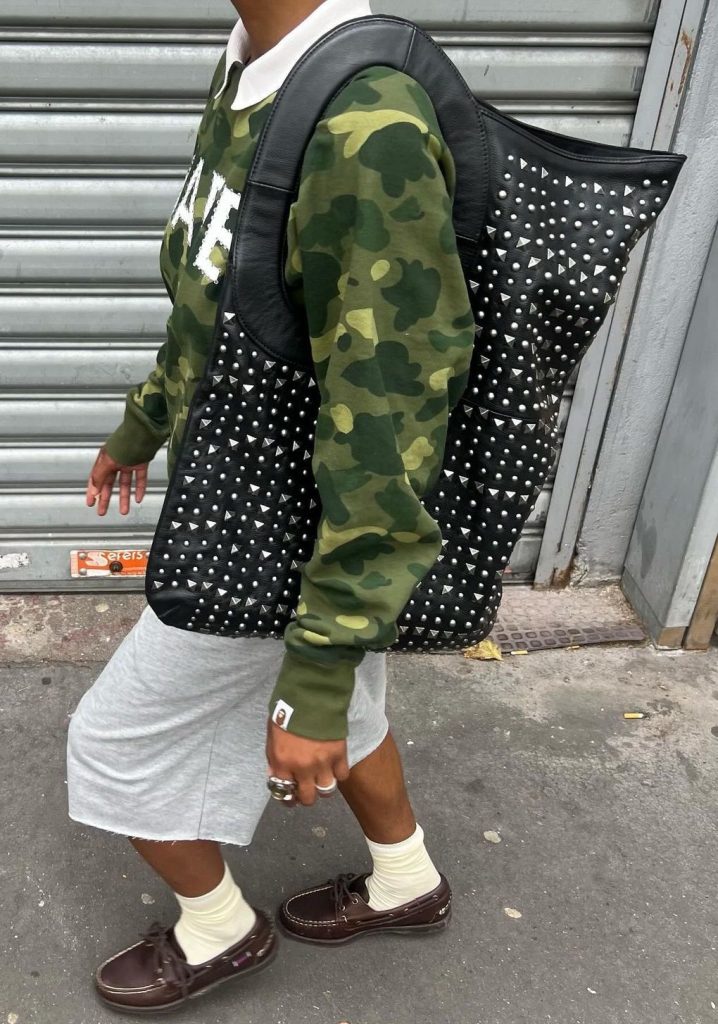
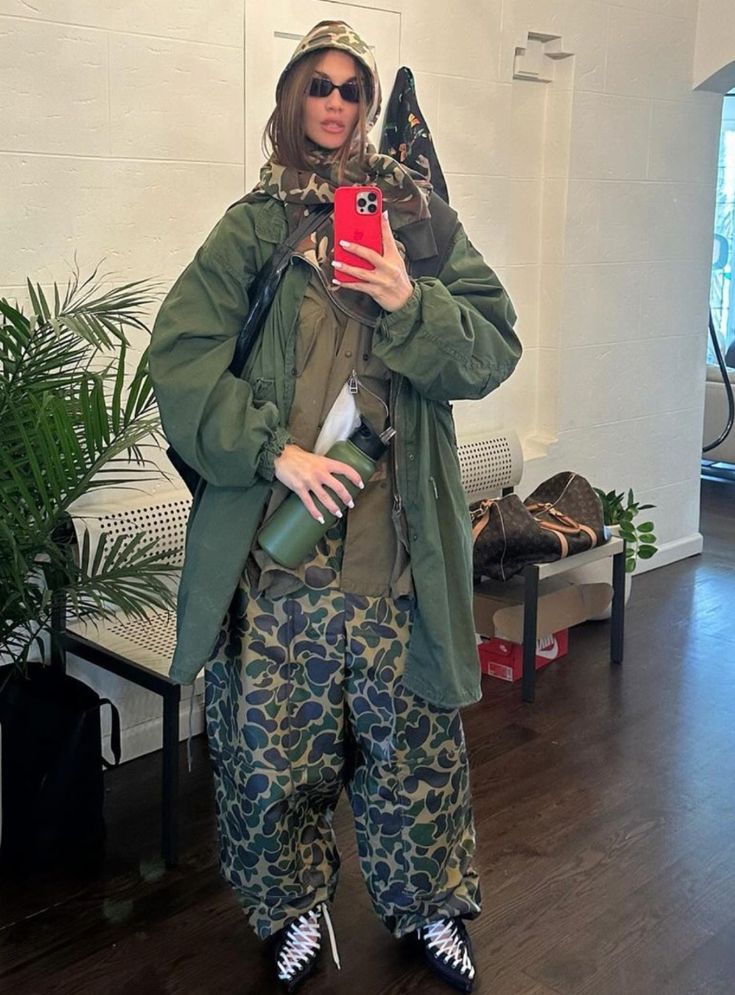
This comeback is part of a broader trend: the revival of military surplus, which is bringing an entire segment of that wardrobe back into fashion, M65 jackets, combat trousers and caps with camouflage leading the charge.
Omnipresent and sometimes barely noticed, the camouflage print has become a staple of fashion’s visual language. It’s one tool of expression among many, perhaps now more political than ever.


